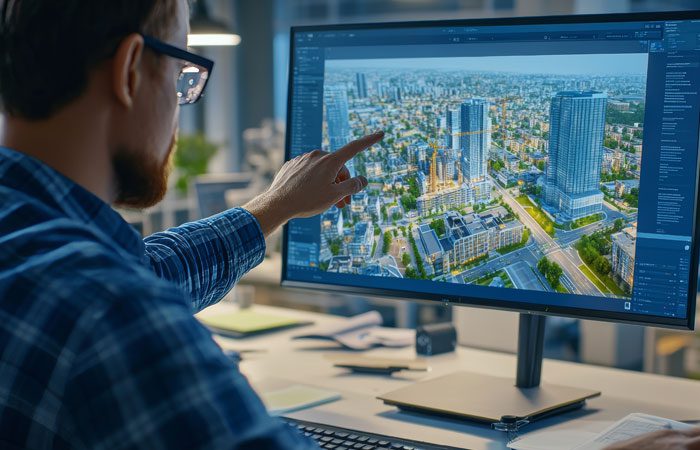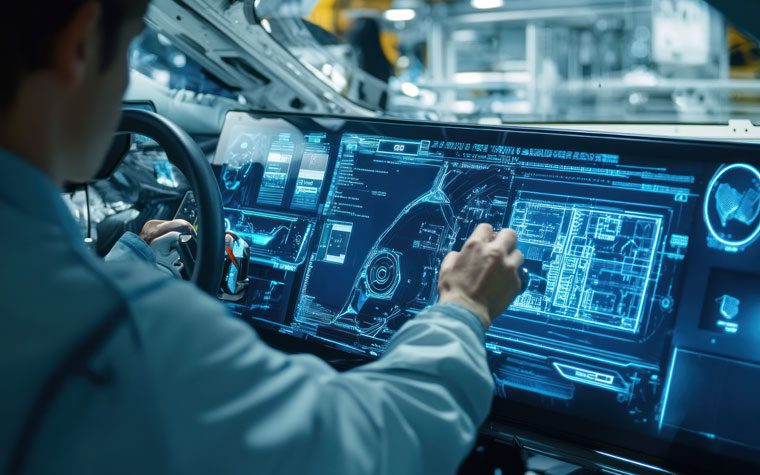
BIM in Sustainable Design: Achieving Green Building Goals Through Smart Modeling
In the race to combat climate change and promote sustainable development, the construction industry plays a pivotal role. With buildings accounting for a significant share of global energy consumption and greenhouse gas emissions, the push for green buildings has never been more critical. Building Information Modeling (BIM) has emerged as a transformative technology in this endeavor, empowering architects, engineers, and contractors to design and construct buildings that align with sustainability goals.
In this blog, we delve into how BIM supports sustainable design and drives the achievement of green building goals.
What Is BIM and Why Is It Crucial for Sustainability?
Building Information Modeling (BIM) is a digital representation of a building’s physical and functional attributes. It provides a collaborative platform for all stakeholders—architects, engineers, contractors, and facility managers—to plan, design, and manage buildings more efficiently.
When it comes to sustainability, BIM acts as a cornerstone by enabling data-driven decisions. It facilitates detailed analysis of energy consumption, resource utilization, and waste reduction, ensuring that sustainability principles are integrated into every phase of the building lifecycle.
Key Contributions of BIM to Sustainable Design
- Energy Efficiency Optimization
BIM empowers designers to evaluate a building’s energy performance right from the conceptual stage. By integrating energy simulation tools with BIM, professionals can:
- Analyze solar gains, shading, and thermal performance of the building envelope.
- Optimize HVAC systems to minimize energy consumption.
- Explore renewable energy solutions such as solar panels or wind turbines.
- Material Selection and Waste Reduction
Sustainable material selection is a cornerstone of green building practices. BIM allows teams to evaluate materials based on:
- Environmental impact (e.g., embodied carbon and recyclability).
- Life cycle costs to ensure long-term value and sustainability.
Additionally, BIM’s precise quantity takeoffs minimize material waste during construction. By virtually building the project before physical construction, teams can identify inefficiencies and reduce errors.
- Water Efficiency
BIM integrates water efficiency analysis by simulating water usage patterns and exploring rainwater harvesting systems. Designers can optimize plumbing layouts, reduce water consumption, and incorporate greywater recycling systems.
- Improved Indoor Environmental Quality (IEQ)
Indoor air quality, thermal comfort, and lighting are critical for occupant well-being and sustainability. BIM facilitates the analysis of:
- Daylighting through advanced simulations, promoting natural light usage.
- Airflow modeling to ensure proper ventilation and reduce reliance on mechanical systems.
By focusing on these aspects, buildings designed using BIM not only achieve sustainability goals but also enhance occupant satisfaction.
BIM and Green Building Certifications
Certifications such as LEED (Leadership in Energy and Environmental Design), BREEAM, and WELL are benchmarks for sustainable design. BIM simplifies the process of achieving these certifications by:
- Automating documentation for compliance.
- Tracking energy performance metrics.
- Providing detailed lifecycle analysis of materials and systems.
For instance, BIM’s energy modeling capabilities help achieve LEED credits in energy optimization categories.
BIM in Action: Real-World Applications
- The Bullitt Center, Seattle
Dubbed the “greenest commercial building in the world,” the Bullitt Center was designed using BIM to achieve net-zero energy consumption. The project utilized BIM to:
- Analyze daylighting and reduce energy use through optimal window placements.
- Model the performance of a 244-kilowatt solar panel array.
- Singapore’s Green Buildings Initiative
Singapore mandates BIM for all public projects to meet its Green Mark standards. Using BIM, architects and engineers have successfully optimized energy use in high-rise buildings while reducing construction waste.
The Future of BIM in Sustainable Design
As the construction industry adopts technologies like artificial intelligence (AI) and Internet of Things (IoT), BIM will become even more integral to sustainable design. Smart sensors integrated with BIM will provide real-time data on building performance, enabling predictive maintenance and further optimization of energy use.
Moreover, advancements in generative design will allow BIM to suggest sustainability-focused design alternatives, empowering professionals to achieve greener outcomes effortlessly.
Conclusion
Building Information Modeling is revolutionizing the way we design and construct sustainable buildings. From energy efficiency and waste reduction to enhanced indoor environmental quality, BIM provides the tools necessary to align with green building goals.
As we move toward a more sustainable future, embracing BIM in design and construction isn’t just a choice—it’s a necessity. By integrating BIM into every phase of the building lifecycle, we can create structures that are not only eco-friendly but also economically and socially responsible.
Green buildings are the way forward, and BIM is the key to unlocking their full potential.


